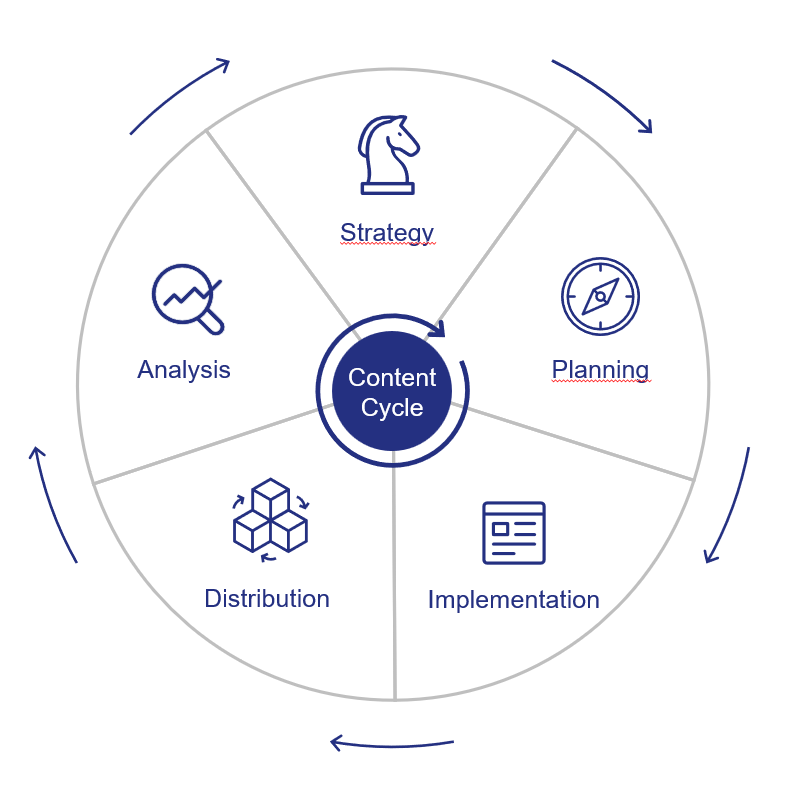How to find the right newsroom software?

The digital landscape offers a wealth of opportunities while also presenting significant challenges for communication and marketing departments in orchestrating their topics effectively and steering them in a targeted manner. This is where newsroom platforms come into play—digital tools that promise seamless, integrated, and efficient communication. Given the vast market offerings, the question arises: How can companies select a platform that is not only technically advanced but also aligns with their specific needs and requirements?
The study
To address this, PANTARHEI, in collaboration with Quadriga University, has developed a systematic and data-driven guide. This guide combines the practical expertise of a consultancy, the methodological approaches of a university, and the experiences of major communication and marketing departments, including Allianz, Bayer, Deutsche Post DHL, Lufthansa, Rewe Group, and Zeiss.
For this purpose, we have defined roles, tasks, and core processes essential for companies utilizing these system landscapes. A central element of this approach is the content cycle, which spans from content creation to analysis. This cycle also serves as the foundation for various everyday application scenarios, which we used to put selected newsroom platforms to the test in practice—from developing strategic key topics and defining KPIs to creating content for multiple channels and assigning specific tasks or approvals.
By directly comparing the systems and using a standardized evaluation method, companies gain a clear perspective on which platform best meets their specific requirements. Rather than focusing solely on technical specifications, we evaluated the platforms based on their ability to effectively support specific, role-based tasks along the content cycle.
"The process of guided, methodical testing for analyzing and evaluating multiple platforms should be implemented as a standard in procurement."
- Michael Madden, Senior Editorial Operations Manager, Allianz SE
The market
Newsroom platforms are used for planning, creating, distributing, and analyzing marketing and communication content across various channels while also offering collaboration features.
The content cycle of each company defines the scope of application for these platforms. The ideal newsroom tool seamlessly integrates a comprehensive content cycle with effective project management, supporting every task—without media disruptions and with extensive analytics capabilities.
However, the tool market is complex and diverse, making the selection process challenging for companies, as each platform comes with its own strengths and weaknesses. All providers strive to gain a competitive edge through different approaches, offering solutions to meet the challenges faced by businesses.
"There is no market standard for terminology in these systems, which makes direct comparison very difficult for us."
- Judith Morgenschweis, Lead Content Management; REWE-Group
The challenges
Whether communication departments still rely on Excel spreadsheets as editorial systems (which are surprisingly robust) or use a variety of standalone solutions to digitally map the content cycle—the demands on digital infrastructure are increasing, and the demand for newsroom platforms continues to grow. In this context, communication departments face several challenges that significantly shape the nature and structure of newsroom platforms:
-
Fragmented communication: Content is created across different departments within a company, from press releases and intranet articles to social media posts and annual reports. Coordination and planning become difficult—who keeps track of everything?
- Media disruptions and information loss: The content cycle is often disrupted due to editorial planning in Excel spreadsheets, task management via email, and approval loops conducted over the phone.
-
Shifting communication boundaries: The traditional division between internal and external communication is disappearing. Every employee can act as a company representative, yet accessing relevant and up-to-date information remains a challenge.
-
Performance analysis: Companies are producing more content across an increasing number of channels. Measuring success, interpreting KPIs, and learning from data are becoming more critical, but also more complex.
-
Strategic alignment: Communication is becoming faster, more transient, and more abundant. Ensuring that communication aligns with corporate goals is crucial for success, yet maintaining this alignment in daily operations is challenging.
-
Clarity and consensus in requirements: Defining precise requirements for a newsroom platform is difficult because communication departments have varying needs. Additionally, decision-making—both in terms of content and budget—is often spread across multiple departments, leading to an unstructured collection of demands.
- Mindset as an underrated success factor: The openness of users to embrace new ways of working is a crucial but often underestimated success factor in the implementation of a newsroom platform.

The learnings
The challenges in finding the perfect newsroom platform highlight the need for a well-thought-out, strategic approach—one that goes beyond technical specifications and puts people and their workflows at the center.
-
One-fits-all remains a wishful thinking: While many companies aspire to have a single platform that covers the entire content cycle, this goal remains unachievable at present. Every platform has certain weaknesses in at least one core area of the content cycle, making the use of additional systems necessary depending on specific requirements. However, open APIs often allow these systems to be integrated in theory.
-
Usability over technology: Endless technological possibilities and the full mapping of one’s processes in a platform often remain an illusion. The number of technological features is not always the most meaningful indicator of a system’s usability. Intuitive handling and user-friendliness are crucial for daily operations.
-
Bias in independent testing: Companies often evaluate newsroom platforms based on their subjective needs, leading to a distorted perception of what the platforms truly offer. Additionally, demo environment testing can be influenced by personal biases—especially when resources, expertise, or motivation are lacking.
-
Every tool has its limits: No tool is perfect—each one has weaknesses in at least one critical area of the content cycle. Clearly defining and prioritizing one's own requirements is essential.
-
A constantly evolving market: While AI is currently found primarily in content creation, its role in strategy, workflow, and task management remains limited. The market is undergoing a transformation that will lead to shifts among providers.
-
Different approaches to the same goal: Each tool has its own methodology for implementing the content lifecycle. When evaluating tools, it is crucial to assess how well they align with the company’s defined requirements.
-
Managing time and resources: A clear understanding of internal requirements and use cases serves as the foundation for an initial market screening. Standardized testing enables comparability between tools and helps save both time and resources.
For companies seeking the ideal newsroom platform, a systematic approach is recommended. One possible path is outlined in the Newsroom Platform Guide developed by PANTARHEI based on their research.
"A platform that allows us to coordinate and manage our topics worldwide is essential to meeting our communication requirements."
- Carl Zeiss AG